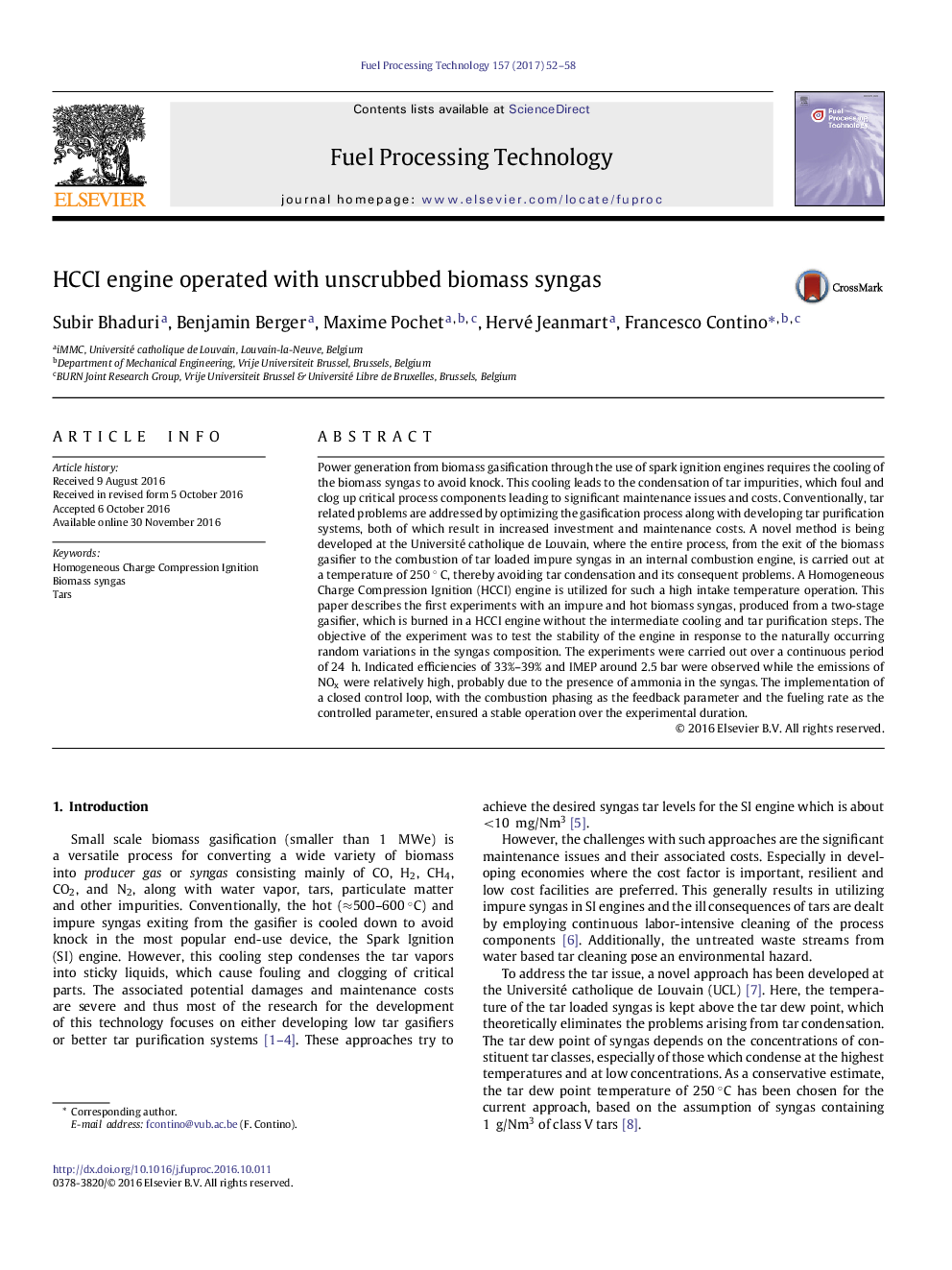| کد مقاله | کد نشریه | سال انتشار | مقاله انگلیسی | نسخه تمام متن |
|---|---|---|---|---|
| 6476572 | 1425389 | 2017 | 7 صفحه PDF | دانلود رایگان |

- Demonstration of tar loaded syngas operation with HCCI engine
- 24Â h continuous operation of HCCI engine directly connected to gasifier
- Closed loop control efficiently kept the ignition near TDC.
Power generation from biomass gasification through the use of spark ignition engines requires the cooling of the biomass syngas to avoid knock. This cooling leads to the condensation of tar impurities, which foul and clog up critical process components leading to significant maintenance issues and costs. Conventionally, tar related problems are addressed by optimizing the gasification process along with developing tar purification systems, both of which result in increased investment and maintenance costs. A novel method is being developed at the Université catholique de Louvain, where the entire process, from the exit of the biomass gasifier to the combustion of tar loaded impure syngas in an internal combustion engine, is carried out at a temperature of 250 ° C, thereby avoiding tar condensation and its consequent problems. A Homogeneous Charge Compression Ignition (HCCI) engine is utilized for such a high intake temperature operation. This paper describes the first experiments with an impure and hot biomass syngas, produced from a two-stage gasifier, which is burned in a HCCI engine without the intermediate cooling and tar purification steps. The objective of the experiment was to test the stability of the engine in response to the naturally occurring random variations in the syngas composition. The experiments were carried out over a continuous period of 24  h. Indicated efficiencies of 33%-39% and IMEP around 2.5 bar were observed while the emissions of NOx were relatively high, probably due to the presence of ammonia in the syngas. The implementation of a closed control loop, with the combustion phasing as the feedback parameter and the fueling rate as the controlled parameter, ensured a stable operation over the experimental duration.
Journal: Fuel Processing Technology - Volume 157, March 2017, Pages 52-58